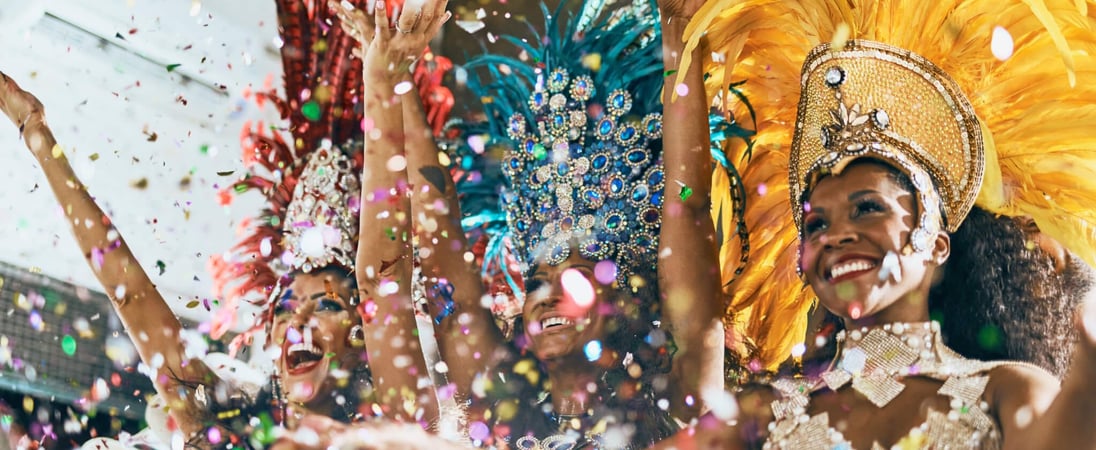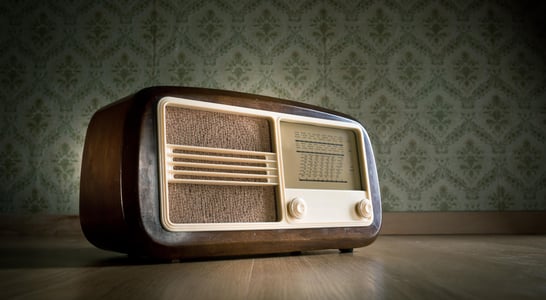
Carnival of Brazil
Samba music, vibrant costumes, and non-stop dancing—this annual festival in Rio de Janeiro is the ultimate party experience you won't forget!
Get ready for the ultimate celebration of culture and tradition, where the streets come alive with vibrant colors, lively music and non-stop dancing. The Brazilian Carnival is a feast for the senses, a chance to immerse yourself in the rich heritage of this beautiful country and experience the unbridled joy and energy of its people.
How to Celebrate the Carnival of Brazil
This exciting event is typically celebrated in February or early March, leading up to the Christian season of Lent. It is primarily celebrated in Rio de Janeiro, but other cities and towns throughout Brazil also hold carnival celebrations. Many different groups of people celebrate, including locals and tourists, young and old, and people from all socioeconomic backgrounds. Here are some ideas for ways you can celebrate at the carnival:
Join a Samba School Parade
One of the most iconic ways to experience the carnival is by joining a samba school parade. Samba schools are community organizations that create elaborate costumes, floats, and performances for the carnival parade. It’s a great way to be immersed in the culture and tradition of the carnival, and to experience the energy and excitement of the parade from the inside.
Attend a Carnival Ball
Another way to enjoy the carnival experience is by going to a carnival ball. These are formal events where people dress in elegant costumes and dance to samba and other types of music. Attending a ball is a wonderful way to experience the more refined side of the carnival, and to enjoy the beauty and elegance of the costumes and performances.
Take a Carnival-Themed Tour
For those who want to learn more about the history and culture of the Brazilian carnival, taking a carnival-themed tour is a great option. These tours typically include visits to samba schools, carnival parade routes, and other important carnival-related sites.
Dance Like No One’s Watching
No need to be a professional. Just feel the rhythm and move those hips. Samba is the heartbeat of Carnival, so join the crowd and let the music guide you. Try a dance class or just follow the groove of the parades!
Throw a Carnival-Themed Party
If you can’t make it to Brazil, you can still celebrate the carnival with a party of your own. Invite friends and family, prepare traditional Brazilian food, play samba music, and encourage everyone to dress in colorful costumes. You can even create your own parade in your neighborhood, with drums, costumes, and dancing.
Feast on Local Delights
Carnival isn’t just a treat for the eyes—there’s plenty of food to savor. Dive into classic Brazilian snacks like coxinha (chicken croquettes) or pastel (fried pastries). Sweeten the deal with brigadeiro or pão de queijo. Delicious bites are part of the celebration!
History of the Carnival of Brazil
The Brazilian Carnival has a history dating back to the 18th century, when the celebration was primarily a religious event. It was originally held as a way for the people to indulge in food and drink before the start of Lent, a period of fasting and repentance. Over time, the carnival evolved to include more secular elements such as music, dance, and elaborate costumes.
During the 19th century, the carnival became more of a public spectacle, with organized parades and competitions, and it quickly became a major event in Brazilian culture.
In the early 20th century, carnival music, known as samba, began to develop and gain popularity. Today, samba is considered the quintessential carnival music and is an integral part of the celebration.
In the 1930s, the government of Rio de Janeiro began to invest in the carnival, and it became an official event. Today, it’s considered the biggest party in the world, attracting millions of people from all over the globe.
Fun Facts about The Carnival of Brazil
-
The King of Carnival
One of the most prominent figures in the Brazilian carnival is the “King of Carnival,” also known as “King Momo.” This person is chosen to preside over the Carnival and is responsible for officially starting the celebrations.
-
The “Cordão” Tradition”
One of the oldest traditions of the carnival is the “Cordão” , a group of people that walk through the streets playing music and dancing, often led by a person dressed in an outrageous costume.
-
Carnival floats
The carnival is famous for its elaborate floats, which can be up to 15 meters tall and are decorated with colorful lights and ornaments.
-
Record-breaking event
The Brazilian carnival is considered the largest street party in the world, with an estimated 2 million people participating in the Rio de Janeiro parade alone. With an estimated 4 million people attending the event, annually.
Also on ...
View all holidaysWorld Radio Day
More than just a blast from the past, radios are a window to the world with music, news, and talk shows to keep you informed and entertained.
Black Love Day
Recognizing and respecting the invaluable contributions and diverse voices within a vibrant and dynamic cultural tapestry.
National Organ Donor Day
The selfless act of giving the gift of life can bring hope and healing to those in need. It's a remarkable legacy that transcends time and spreads compassion.
World Whale Day
Gigantic creatures that sing, dance, and swim in the vast blue sea, whales are majestic beings that fill our hearts with wonder and awe.




